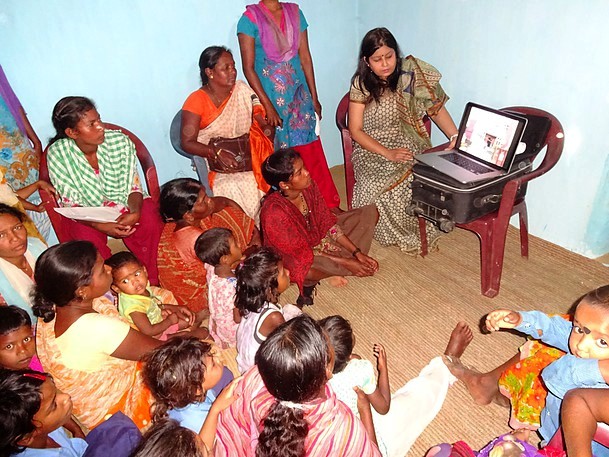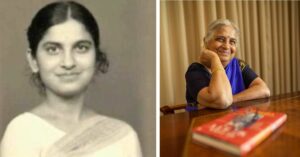How Samosas and Gulab Jamuns Are Saving Tribal Girls in Jharkhand From Human Traffickers
Activists in the state have been educating tribals about the dangers of trafficking through innovative methods.

Activists in the state have been educating tribals about the dangers of trafficking through innovative methods.
The eastern state of Jharkhand has many things to offer. While there are the obvious exquisite, traditional handicrafts – from baskets and metal artifacts to weaves – there is something else that this region is known for – it’s a hub for buying and selling girls. Trafficking is a roaring ‘trade’ here and it’s the unsuspecting girls and young women who fall prey. Just like five-year-old Sula did a few years back.
Sula was promised a paradise. She was playing outside her small hut in a nondescript village, when an elderly man walked up to her and told her he would take her to a big playground where she could enjoy with many children, all day long. And if she felt hungry, she could always have sweets and candies to her heart’s content.
The little one immediately agreed to go with him – but the place she was taken to was no paradise, not by any stretch of imagination. Days later, she found herself in an unknown home in an unknown city, where she was made to work from dawn to dusk. That would have still been okay, but then the drunk husband of her employer started beating and sexually abusing her from time to time. Sula was trafficked from right outside her home to New Delhi.
As such, girls are taken away on the promise of a better life. Some are lured with good clothes, food and toys, others are assured that their families would get some much-needed money. However, once they leave their village, they are sold to agents who may take them anywhere across the country – from Delhi to Chennai, Punjab to Goa.
In some instances, the girls may be sold as “brides” in states with a skewed sex ratio or trafficked to the Middle East where they end up being enslaved as paperless, bonded labour. Others become forced organ donors, surrogate mothers and sex slaves. Of course, wherever they are, for their families and community back home, they have simply disappeared without a trace.
The hard numbers only add to this dismal scenario.

Representative photo source: Medium
Statistics reveal that there are over five lakh women and children trafficked every year in India and over 20,000 children are from East India alone. In 2013, the UN Office on Drugs and Crime flagged Jharkhand as one of the most vulnerable states in the country. In fact, according to Nobel Laureate Kailash Satyarthi’s Bachpan Bachao Andolan (BBA), of the 58 girls they managed to rescue from the Rangia Railway Station in Assam, a well-known transit point for trafficked children, 18 were from Jharkhand.
One BBA activist, on the condition of anonymity, talks about the route that is often taken to transport the girls and women, “It stretches out from Jharkhand into Chhattisgarh or Odisha. From there, the agents literally play tag with the girls, taking them to various parts of the country, or the world. The agents are extremely well-connected with each other together. It’s like a cartel. Clearly, unless this nexus is broken, there won’t be much change.”
Indeed, what’s truly disheartening is that this human rights violation continues to happen despite stringent laws in place. For starters, there is the Immoral Traffic (Prevention) Act, 1956, that prohibits trafficking with punishment that ranges from seven years to life imprisonment. Bonded and forced labour is punishable under the Bonded Labour Act, 1976, the Child Labour Act, 1986, and also the Constitution of India. Additionally, Sections 366 (A) and 372 of the Indian Penal Code (IPC) specifically prohibit the kidnapping and selling of minors into prostitution, respectively, and direct the arrest of traffickers with a maximum of 10 years imprisonment and a fine.
So, what is it that continues to fuel this illegal ‘trade’? Activists peg the blame on ignorance and poverty. Indeed, they are convinced that the root of all trafficking is poverty and marginalisation. The tribal hinterland is filled with families for whom hunger and destitution have been a way of life for generations. They have no money, no prospects, no real access to education and gainful employment.
In some villages, there are no teenagers left behind – they have either been trafficked or left in pursuit of greener pastures.
The absolute neglect of the needs of these people has resulted in creating a social climate in which tempting youngsters has become very easy.

In some cases, greedy relatives, too, have a stake. “It’s not like the families are completely innocent. Selling girls to an agent brings in good money. So, there are times when parents themselves or some relatives decide to trade the lives of their daughters to ensure the upkeep of others in the home. There are many instances where we’ve come across uncles selling their nieces after either brainwashing the parents or enticing the girls. In those cases, the parents wonder what has happened,” shares Rashmi Tiwari, an activist who has been working to educate and empower tribal communities, especially at-risk girls and women in the state.
Typically, the price paid for a girl ranges between Rs. 1 lakh to Rs. 4 lakh. Occasionally, it can go up to around Rs. 8 lakh. Most of them are sent to work as domestic help and they are nearly always sexually abused or raped by the employees of the placement agencies or their employers. The women are then forced to have the baby, which is sold to childless couples. The agency owners are known to hold auctions for the unborn foetuses.
But all is not lost just yet. Fortunately, today, for every Sula, who falls into the trap of traffickers, there is also an Anjali, from Chatakpur village in the Maoist-affected region of the state, who is working with Tiwari’s Aahan Tribal Development Foundation, mentoring tribal girls to study and beat the very poverty that makes them weak and powerless.
Elaborates Tiwari, “When we started working in the tribal pockets, the villagers thought that we were members of some trafficking syndicate that was luring their girls with ‘samosas’ and ‘gulab jamuns’. The food, which is anyway scarce around these parts, used to be a major incentive for the children to attend our meetings. Therefore, wary parents would invariably come in with their daughters. This helped me tremendously because as they had the ‘samosas’, they had no option other than to listen to what I had to say on the dangers of trafficking again and again. Winning their trust was very difficult during the initial days.”
Having been cheated out of their rightful government entitlements has made tribal people quite suspicious of those outside of their community.
“Nonetheless, I kept going back to them with food, a few books and stationery items for the girls, and anti-trafficking videos, till they became comfortable with me and convinced of my good intentions,” she says.
Anjali is one of the many girls in Chatakpur who have got a sense purpose after connecting with Aahan’s Project Maiyan.

Though her mother, a small-time farmer, works day and night to feed the family, her father is an alcoholic suffering from a mental illness.
Whereas earlier, a girl like Anjali would have had only a few options at hand to earn a living – be it cutting and selling wood or taking on household duties, so that her mother could engage in paid work or preparing for a government job – nowadays she is running the first Empowerment Centre for Tribal Girls set up by Aahan.
The centre is a place where girls can learn life and vocational skills, have access to resources like books and develop competencies to become employable in a respectable profession. Meanwhile, Anjali has been trained to conduct the centre’s activities, interact with girls and create awareness about trafficking. At the same time, as her self confidence has grown, she doesn’t bat an eyelid before approaching her village panchayat for help or information and frequently sits in on meetings of the women’s self-help groups in her village.
“I have escaped being trafficked, which used to be the fate of most girls here. I am eager to make the most of this opportunity I have to be a change agent who can transform the future of her community,” she concludes.
Featured image source: wixstatic.com
Like this story? Or have something to share? Write to us: [email protected], or connect with us on Facebook and Twitter (@thebetterindia).

Similar Story

Sudha Murthy: How a Small Town Girl Shattered the Glass Ceiling With Her Self-Belief
As an engineer, Sudha Murthy wrote a letter to JRD Tata that changed TELCO’s employment policy. Little did she know then that she would make history, and become an icon for millions of Indians.
Read more >
If you found our stories insightful, informative, or even just enjoyable, we invite you to consider making a voluntary payment to support the work we do at The Better India. Your contribution helps us continue producing quality content that educates, inspires, and drives positive change.
Choose one of the payment options below for your contribution-
By paying for the stories you value, you directly contribute to sustaining our efforts focused on making a difference in the world. Together, let's ensure that impactful stories continue to be told and shared, enriching lives and communities alike.
Thank you for your support. Here are some frequently asked questions you might find helpful to know why you are contributing?


This story made me
-
97
-
121
-
89
-
167












